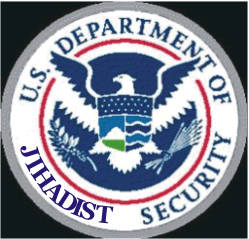July 30, 2008, - 2:16 pm
HILARIOUS But Sad: “Last Responders” – Dept. of Homeland Security Agents 1st to Run From Disaster
By Debbie Schlussel
You know the term, “first responders”–police, firefighters and others who come to the scene of a disaster to treat victims, before the feds get there to do their jobs.
Well, apparently, in Los Angeles, the feds–Homeland Security’s ICE agents–are not only “last responders.” They’re “never responders.”
Sources tell me that, yesterday, after the Southern California earthquake, DHS’ Immigration and Customs Enforcement agents (who are often tasked to help FEMA, as they did in New Orleans after Hurricane Katrina) were the first to run home and escape.
Here’s the embarrassing scoop, according to one of my inside sources. (Keep in mind that this was not the decision of the ICE agents themselves–whose courage and bravery I don’t doubt for a second–but of those who run the agency from the top and the bureaucrats who run its Southern California office, including the Los Angeles ICE Special Agent in Charge.):


I am so furious today that I wanted to vent.
Yesterday, shortly after the Los Angeles earthquake of 5.4 on the Richter scale, ICE, Office of Investigation, LA SAC [Special Agent in Charge] office in Long Beach, closed its offices. Along with it, Riverside Investigations office also let ALL of their employees go home and Santa Ana allowed most of their employees to leave.
The law enforcement entity of Dept. of Homeland Security was the first to go running home!!!! Keep in mind that other non-law enforcement entities of DHS remained at work, called their families to ensure they were OK and remained calm.
During an “emergency,” I take it that ICE agents are not to be relied upon…..how sad is that!!!!
I understand that family is important, but honestly, the damages were minimal. When all other law enforcement entities and the fire department are out in full force, ICE agents run away. Ridiculous and embarrasing!
Yup, this sounds like the agency “The ICE Princess” a/k/a Julie L. Myers “runs” along with proud high school grad John Torres, her incompetent, unethical second-in-command.
G-d help us if there’s a national disaster. ICE will be nowhere to be seen.
But, hey, if there’s a costume party, now we’re talkin’. Especially if someone is dressed in “Blackface.”


julie myers is number 1 in closing down korean message parlors. these places are her number one threat to the united states. let promote her again.
PNAMARBLE on July 30, 2008 at 6:53 pm